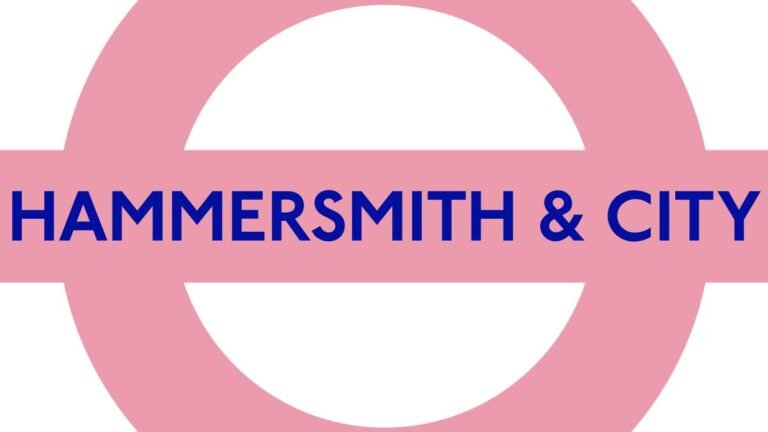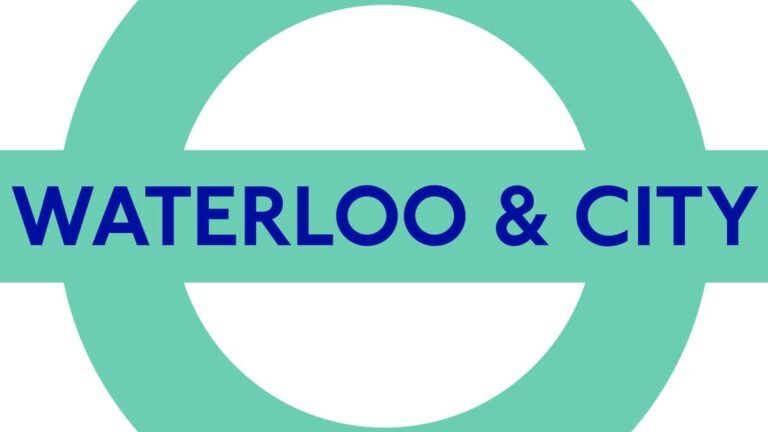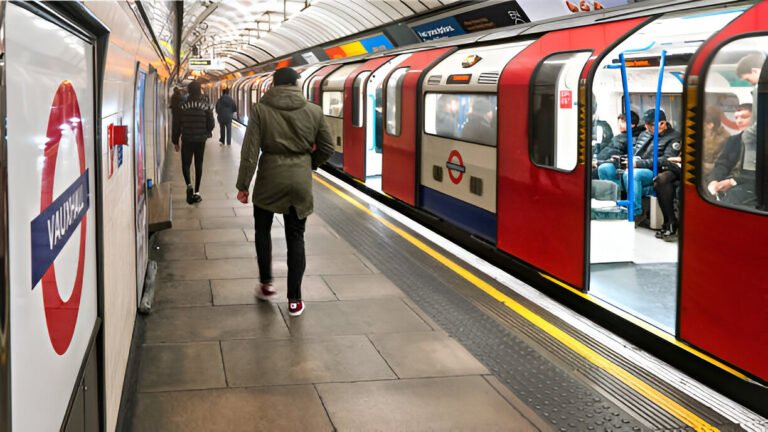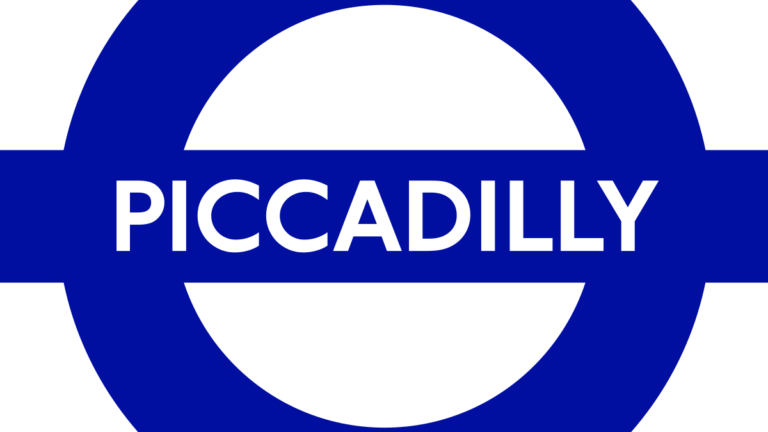The Elizabeth line tube map (also known as the “Purple Line”) is one of the most transformative additions to London’s transport network in decades. While it’s not officially part of the London Underground lines, it seamlessly integrates with Tube services, offering faster cross-city journeys.
✔ Elizabeth Line vs. London Underground – What’s the difference?
✔ All Elizabeth Line stops & key interchanges
✔ Timetable, frequency & peak/off-peak hours
✔ How it connects to other London Underground stations
✔ Oyster card, fares & travel tips
Whether you’re a commuter or a visitor, this guide will help you navigate the Elizabeth Line Map like a pro.
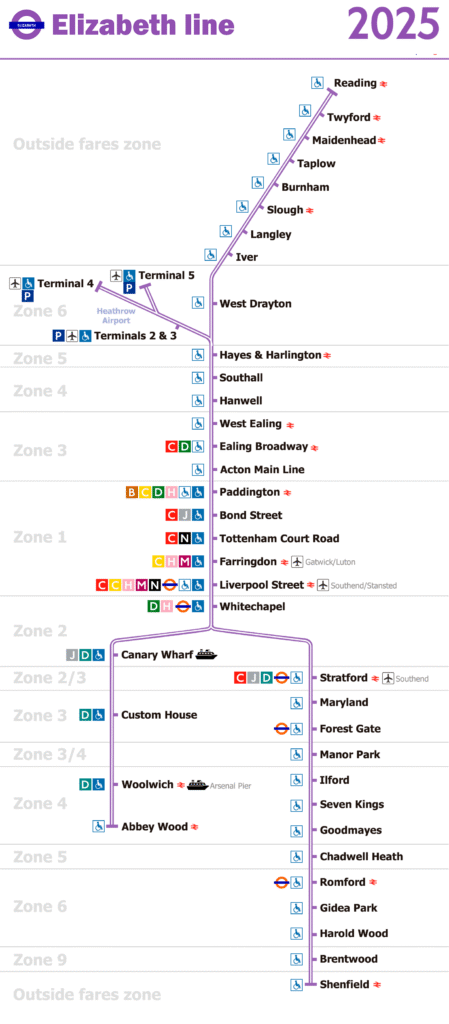
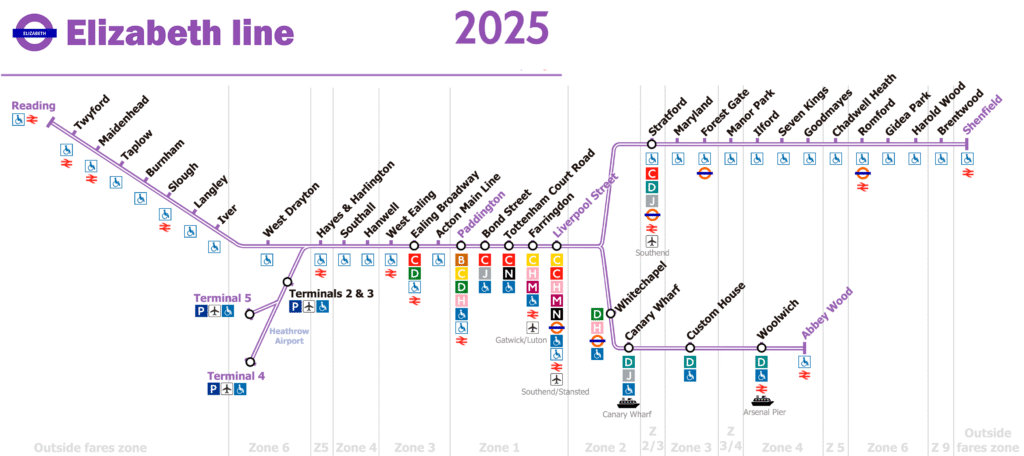
Route 1: Abbey Wood – Paddington (Elizabeth Line Map)
| STATIONS | ZONE | INFO |
|---|---|---|
| Abbey Wood | 4 | |
| Woolwich | 4 | |
| Custom House | 3 | |
| Canary Wharf | 2 | |
| Whitechapel | 2 | |
| Liverpool Street | 1 | |
| Farringdon | 1 | |
| Tottenham Court Road | 1 | |
| Bond Street | 1 | |
| Paddington | 1 | |
Route 2: Paddington – Heathrow Terminal 4 (Elizabeth Line Map)
| STATIONS | ZONE | INFO |
|---|---|---|
| Paddington | 1 | |
| Acton Main Line | 3 | |
| Ealing Broadway | 3 | |
| West Ealing | 3 | |
| Hanwell | 4 | |
| Southall | 4 | |
| Hayes & Harlington | 5 | |
| Heathrow Terminals 2 & 3 | 6 | |
| Heathrow Terminal 4 | 6 | |
Route 3: Paddington – Heathrow Terminal 5
| STATIONS | ZONE | INFO |
|---|---|---|
| Paddington | 1 | |
| Acton Main Line | 3 | |
| Ealing Broadway | 3 | |
| West Ealing | 3 | |
| Hanwell | 4 | |
| Southall | 4 | |
| Hayes & Harlington | 5 | |
| Heathrow Terminals 2 & 3 | 6 | |
| Heathrow Terminal 5 | 6 | |
Route 4: London Paddington – Reading
Route 5: Shenfield – Liverpool Street
| STATIONS | ZONE | INFO |
|---|---|---|
| Shenfield | — | |
| Brentwood | 9 | |
| Harold Wood | 6 | |
| Gidea Park | 6 | |
| Romford | 6 | |
| Chadwell Heath | 5 | |
| Goodmayes | 4 | |
| Seven Kings | 4 | |
| Ilford | 4 | |
| Manor Park | 3/4 | |
| Forest Gate | 3 | |
| Maryland | 3 | |
| Stratford (London) | 2/3 | |
| Liverpool Street | 1 | |
1. Elizabeth line tube map vs. London Underground: Key Differences

A. Is the Elizabeth Line map Part of the London Underground?
- No, it’s a separate rapid transit system operated by Transport for London (TfL).
- Similarities to Tube:
- Uses Oyster/Contactless payments
- Appears on the London Tube map (purple line)
- Differences:
- Longer trains (9-carriages vs. 6-8 on the Tube)
- Faster speeds (reduces travel time across London)
- Step-free access at all stations
B. How It Connects to London Underground Lines
The Elizabeth Line intersects with multiple Tube lines, making transfers easy:
| Elizabeth Line Stop | Connecting London Underground Lines |
| Paddington | Bakerloo, Circle, District, Hammersmith & City |
| Liverpool Street | Central, Circle, Hammersmith & City, Metropolitan |
| Farringdon | Thameslink, Circle, Metropolitan, Hammersmith & City |
| Tottenham Court Road | Central, Northern |
| Whitechapel | District, Hammersmith & City |
Pro Tip: Use the TfL Journey Planner to find the quickest route between Elizabeth Line and London Underground stations.
2. Elizabeth Line map Stops: Full List & Key Interchanges
The Elizabeth Line (Crossrail) is London’s newest high-capacity railway, seamlessly connecting East, West, and Central London with 41 stations. Below are the most important stops for travelers, especially those transferring to other lines or airports.
🚆 Core Central London Stops (Underground Section)
These are the busiest and most interconnected stations in the heart of London:
- 📍 Paddington
- Key Connections:
- Heathrow Express (15 mins to Heathrow Airport)
- Bakerloo, Circle, District, Hammersmith & City lines
- Tip: Best for Heathrow transfers or westbound trains to Reading.
- Key Connections:
- 📍 Bond Street
- Key Connections:
- Jubilee Line (for Westminster, London Bridge)
- Central Line (Westfield shopping, Oxford Street)
- Tip: Ideal for shopping or transferring to the West End.
- Key Connections:
- 📍 Tottenham Court Road
- Key Connections:
- Central Line (British Museum, Oxford Circus)
- Northern Line (Camden, Leicester Square)
- Tip: Walkable to Soho and Covent Garden.
- Key Connections:
- 📍 Farringdon Elizabeth line tube map
- Key Connections:
- Thameslink (direct trains to Gatwick, Luton, Brighton)
- Circle, Metropolitan, Hammersmith & City lines
- Tip: Best for Gatwick Airport via Thameslink (no need to change trains).
- Key Connections:
- 📍 Liverpool Street Elizabeth line tube map
- Key Connections:
- Central, Circle, Hammersmith & City, Metropolitan lines
- National Rail (Stansted Express to Stansted Airport)
- Tip: Direct link to Stansted Airport (45 mins).
- Key Connections:
- 📍 Whitechapel Elizabeth line tube map
- Key Connections:
- District Line (Tower Hill, Upminster)
- London Overground (Shoreditch, Croydon)
- Tip: Gateway to East London’s trendy spots (Brick Lane, Spitalfields).
- Key Connections:
- 📍 Canary Wharf Elizabeth line tube map
- Key Connections:
- Jubilee Line (North Greenwich, Stratford)
- Tip: London’s financial hub with direct DLR access.
- Key Connections:
- 📍 Custom House Elizabeth line tube map
- Key Connections:
- DLR (ExCeL Centre, London City Airport)
- Tip: Best for London City Airport (5 mins via DLR).
- Key Connections:
- 📍 Woolwich Elizabeth line tube map
- Key Connections:
- Southeastern Rail (Kent, Greenwich)
- Tip: Historic area with the Royal Arsenal.
- Key Connections:
- 📍 Abbey Wood
- Key Connections:
- Southeastern Rail (Kent, Thames Estuary)
- Tip: Terminus for eastbound Elizabeth Line trains.
- Key Connections:
🔄 Key Interchange Stations
| Elizabeth Line Stop | Best Transfer For | Destination Examples |
| Paddington | Heathrow Airport, West England | Reading, Slough, Ealing Broadway |
| Farringdon | Gatwick/Luton Airports, Brighton | Thameslink services |
| Liverpool Street | Stansted Airport, East Anglia | Cambridge, Norwich |
| Custom House | London City Airport, ExCeL Centre | DLR to Beckton/Stratford |
| Canary Wharf | O2 Arena, Stratford, North Greenwich | Jubilee Line connections |
💡 Pro Tips for Using the Elizabeth Line
✔ Oyster/Contactless: Works on all Elizabeth Line routes (same fare as Tube).
✔ Heathrow Access: Trains run every 15 mins (Paddington ↔ Heathrow T2/T3/T4/T5).
✔ Avoid Rush Hour: 7:30–9:30 AM & 4:30–6:30 PM (packed trains).
✔ No Night Tube: Last trains depart around 11:30 PM–12:30 AM.
🚇 Why the Elizabeth Line is a Game-Changer
- Faster than the Tube: Cuts journey times (e.g., Paddington ↔ Canary Wharf in 18 mins vs. 35 mins on Jubilee Line).
- Airport Links: Direct or one-change access to Heathrow, Gatwick, Stansted, and London City Airports.
- Accessibility: Step-free access at all central stations (great for luggage/wheelchairs).
Westbound Stops (Towards Heathrow & Reading)
- Ealing Broadway (District, Central lines)
- Southall
- Heathrow Terminals 2, 3, 4, 5
Eastbound Stops (Towards Shenfield)
- Stratford (Jubilee, Central, DLR, Overground)
- Romford
- Shenfield
Key Insight: The Elizabeth Line reduces journey times significantly. For example:
- Paddington to Canary Wharf: 10 mins (vs. 25 mins on Jubilee line)
- Liverpool Street to Heathrow: 35 mins (vs. 50+ mins on Piccadilly line)
3. London Underground Timetable: Elizabeth Line Operating Hours
A. Frequency & Peak Hours
| Time | Frequency (Central Section) |
| Peak (7-9 AM, 5-7 PM) | Every 2-5 mins |
| Off-Peak (Daytime) | Every 5-10 mins |
| Evenings/Sundays | Every 10-15 mins |
3.1. Elizabeth Line First & Last Trains: What You Need to Know
The Elizabeth Line operates early morning to late night, but unlike some Tube lines, it does not run 24 hours. Here’s a detailed guide to help you plan your journey, especially for early flights or late-night travel.
1. First Trains (Central London to Key Destinations)
Trains start around 5:30 AM from central stations, but exact times vary by route:
Westbound (From Central London to Heathrow/Reading)
- Paddington → Heathrow T5:
- First train: ~5:10 AM (arrives ~5:40 AM)
- Paddington → Reading:
- First train: ~5:30 AM (arrives ~6:30 AM)
Eastbound (From Central London to Abbey Wood/Shenfield)
- Liverpool Street → Shenfield:
- First train: ~5:30 AM
- Whitechapel → Abbey Wood:
- First train: ~5:45 AM
🔹 Key Tip: If you have a very early flight (before 7 AM), check if your terminal is served by the first train—otherwise, book a taxi or night bus.
2. Last Trains (Central London Departures)
Most Elizabeth Line services stop around 11:45 PM, with slight extensions on Fridays & Saturdays:
Westbound (To Heathrow/Reading)
- Paddington → Heathrow T5:
- Last train: ~11:45 PM (Mon-Thu), ~12:15 AM (Fri/Sat)
- Paddington → Reading:
- Last train: ~11:30 PM
Eastbound (To Abbey Wood/Shenfield)
- Liverpool Street → Shenfield:
- Last train: ~11:45 PM
- Canary Wharf → Abbey Wood:
- Last train: ~11:50 PM
🚨 Warning: Miss the last train? You’ll need to rely on Night Overground, night buses, or taxis.
3. Night Tube & Alternative Options
❌ No Night Elizabeth Line (unlike the Jubilee, Victoria, or Central lines).
✅ Late-Night Alternatives:
- Night Overground (Limited service on some routes, e.g., Highbury & Islington ↔ New Cross Gate).
- Night Buses (e.g., N9 from Heathrow to Central London, N15 to East London).
- Taxi/Rideshare (Uber, Bolt, or pre-booked minicabs—surcharges apply after midnight).
4. Pro Tips for Smooth Travel
✔ Check TfL’s Journey Planner (link) for real-time updates (engineering works can disrupt schedules).
✔ Use Citymapper or Google Maps for live departure times.
✔ Heathrow Late Arrivals? If your flight lands after 11:30 PM, the Elizabeth Line may not be running—have a backup plan (taxi or hotel shuttle).
Summary: Elizabeth Line Hours
| Direction | First Train | Last Train (Sun-Thu) | Last Train (Fri/Sat) |
| Paddington → Heathrow | ~5:10 AM | ~11:45 PM | ~12:15 AM |
| Paddington → Reading | ~5:30 AM | ~11:30 PM | ~11:45 PM |
| Liverpool St → Shenfield | ~5:30 AM | ~11:45 PM | ~12:00 AM |
| Canary Wharf → Abbey Wood | ~5:45 AM | ~11:50 PM | ~12:10 AM |
Final Advice
- Early flights? Trains start early, but allow buffer time—delays happen!
- Late nights? Pre-book a taxi or check Night Bus routes.
- Weekend travel? Slightly extended hours on Fridays & Saturdays
4. Elizabeth Line Fares & Oyster Card Guide: What You Need to Know
The Elizabeth Line (Crossrail) integrates with London’s existing fare system, but there are key differences—especially for airport trips and longer journeys. Here’s a clear breakdown:
1. Standard Fares (Within London Zones 1-6)
✅ Same as the Tube – Oyster/Contactless pay-as-you-go fares apply.
- Peak times (Mon-Fri, 6:30–9:30 AM & 4–7 PM): Higher fares.
- Off-peak (All other times, incl. weekends): Cheaper.
Example Fares (2024):
| Journey (Zones) | Peak Fare | Off-Peak Fare |
| Zone 1 → Zone 2 | £2.80 | £2.70 |
| Zone 1 → Zone 6 | £5.60 | £3.60 |
🔹 Tip: Use TfL’s Single Fare Finder (link) for exact costs.
2. Key Exceptions (Higher Fares)
A. Heathrow Airport Journeys
- Heathrow → Central London (Zone 1):
- Peak: £12.80
- Off-Peak: £10.80
- Why? Heathrow has a “Rail Access Fee” (like the Heathrow Express).
- Cheaper Alternatives:
- Piccadilly Line (Tube): £5.60 (anytime, but slower).
- Elizabeth Line to Hayes & Harlington + taxi: ~£8-10.
B. Trips Beyond London (Reading/Shenfield)
- National Rail fares apply (not standard Tube/Oyster rates).
- Example:
- London Paddington → Reading: ~£25 (peak), ~£15 (off-peak).
- Use: Contactless/Oyster only up to West Drayton (Zone 6). Beyond that, buy a paper ticket or use a Railcard.
3. Oyster/Contactless Rules
✔ Works everywhere except beyond West Drayton (west) and Shenfield (east).
✔ Daily/Weekly Caps apply (same as Tube).
✔ No Oyster? Use Apple Pay/Google Pay or a contactless bank card.
🚨 Watch Out:
- Touch in/out at pink readers (even in same station).
- Heathrow Terminal 4 has a separate fare gate—don’t miss it!
4. Best Fare Hacks
💰 Save on Heathrow trips:
- Off-peak travel (after 9:30 AM weekdays or weekends).
- Group tip: 3+ people? A taxi split may cost the same as Elizabeth Line fares.
🚆 Beyond London?
- Railcards (e.g., 16-25, Network Railcard) discount National Rail portions.
Summary: Is the Elizabeth Line More Expensive?
| Scenario | Cost Difference |
| Within Zones 1-6 | Same as Tube |
| Heathrow → Central London | +£5-7 vs. Piccadilly Line |
| Reading/Shenfield trips | National Rail pricing (higher) |
For most London journeys, it’s the same price—just faster! 🚅
B. Cheapest Way to Travel
✔ Use Oyster/Contactless (daily/weekly caps apply)
✔ Avoid paper tickets (more expensive)
✔ Travel Off-Peak (after 9:30 AM weekdays)
Fare Example:
- Paddington to Canary Wharf: £2.80 (Peak), £2.70 (Off-Peak)
5. How It Compares to Other London Underground Lines
| Feature | Elizabeth Line | London Underground |
| Speed | Faster (up to 60mph) | Slower (avg. 20-30mph) |
| Capacity | 1,500 passengers/train | 800-1,000/train |
| Frequency | Every 2-5 mins (peak) | Every 2-8 mins |
| Step-Free Access | All stations | Only 90/272 stations |
Best For:
✔ Cross-London commuters (e.g., Canary Wharf to Paddington)
✔ Heathrow access (faster than Piccadilly line)
✔ Accessibility needs (all stations have lifts)
6. FAQs (Quick Answers)
Q: Is the Elizabeth Line part of the London Underground?
A: No, but it connects to multiple London Underground lines.
Q: What’s the cheapest way to use the Elizabeth Line?
A: Oyster/Contactless (same fares as the Tube).
Q: Does the Elizabeth Line run 24 hours?
A: No, but Night Overground & some Tube lines do.
Q: Which London Underground stations connect to the Elizabeth Line?
A: Key ones include Liverpool Street, Paddington, Farringdon, and Whitechapel.
7. Final Tips for Using the Elizabeth Line
✔ Check for engineering works (weekend disruptions happen).
✔ Use TfL’s Journey Planner for real-time updates.
✔ Validate contactless/Oyster at pink readers.
Conclusion: Is the Elizabeth Line Worth It?
Final Verdict: Is the Elizabeth Line Worth It? Absolutely! Here’s Why
The Elizabeth Line (officially opened in 2022) has transformed London’s transport network—faster, smoother, and more efficient than traditional Tube lines. Here’s a detailed breakdown of why it’s a must-use for both commuters and travelers:
🚆 Key Advantages of the Elizabeth Line
1. Speed & Efficiency
✔ Faster Journeys:
- Cuts travel times by up to 50% on key routes (e.g., Paddington → Canary Wharf in 18 mins vs. 35 mins on Jubilee Line).
- Fewer stops in central sections compared to the Tube.
✔ Higher Frequency:
- Trains every 2-5 mins in Central London (peak times).
- No “waiting forever” like some District/Circle Line services.
2. Comfort & Accessibility
✔ Spacious, Air-Conditioned Trains:
- Wider doors, walk-through carriages, and no “sardine crush” like the Piccadilly Line.
- Luggage-friendly (unlike cramped Tube trains).
✔ Step-Free Access at All Stations:
- Elevators and ramps make it ideal for wheelchairs, strollers, or heavy bags.
3. Seamless Connections
✔ Direct Links to Key Transport Hubs:
- Heathrow Airport (no changes from Central London).
- Farringdon (Thameslink) → Gatwick/Luton Airports.
- Liverpool Street → Stansted Airport via Stansted Express.
- Custom House (DLR) → London City Airport.
✔ Interchanges with Every Major Tube Line:
- Bond Street (Jubilee), Tottenham Court Road (Northern), etc.
4. Same Fares as the Tube (Mostly)
✔ Oyster/Contactless Accepted (Zones 1-6 at standard Tube prices).
✔ Only exceptions: Heathrow (£12.80 peak) and beyond Zone 6 (e.g., Reading).
🚫 When to Avoid the Elizabeth Line
- Very late nights (after midnight) – No Night Tube service; use Night Buses/taxis.
- Short hops in Zone 1 – If it’s just 1-2 stops, walking/the Tube may be quicker.
- Heathrow on a budget – Piccadilly Line is cheaper (£5.60 vs. £12.80).
💡 Pro Tips for Maximizing the Elizabeth Line
- Use for Airport Transfers:
- Heathrow T4/T5? Elizabeth Line is faster than Piccadilly (but pricier).
- Gatwick? Change at Farringdon for Thameslink (no Tube stress!).
- Avoid Peak Hours (7-9:30 AM / 4-7 PM):
- Still busy (though less than the Central Line!).
- Look for Purple Signs:
- Stations and maps highlight Elizabeth Line routes in regal purple.
🏆 Final Verdict: Who Should Use It?
✅ Commuters – Faster, more reliable than old Tube lines.
✅ Tourists – Easy access to Heathrow, Canary Wharf, and East London.
✅ Families/Luggage Haulers – Step-free, spacious, and air-conditioned.
✅ Business Travelers – Wi-Fi-friendly and professional vibe.
🎯 TL;DR:
The Elizabeth Line is London’s best transport upgrade in decades—use it for speed, comfort, and stress-free connections.


